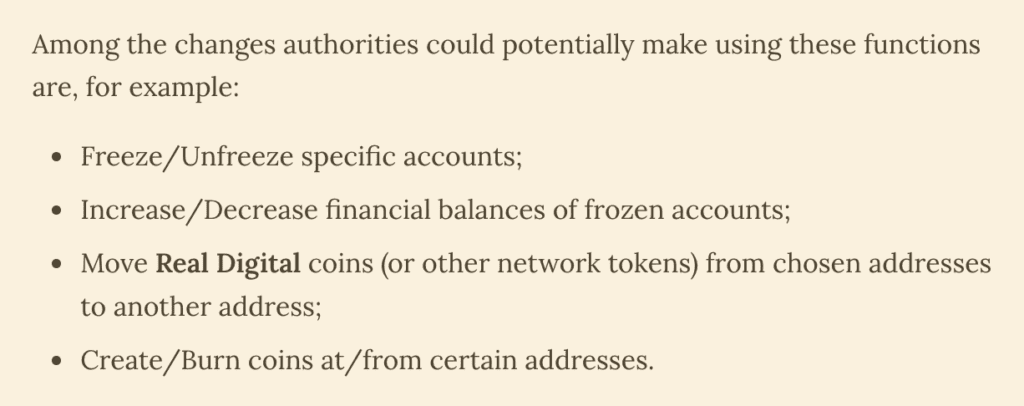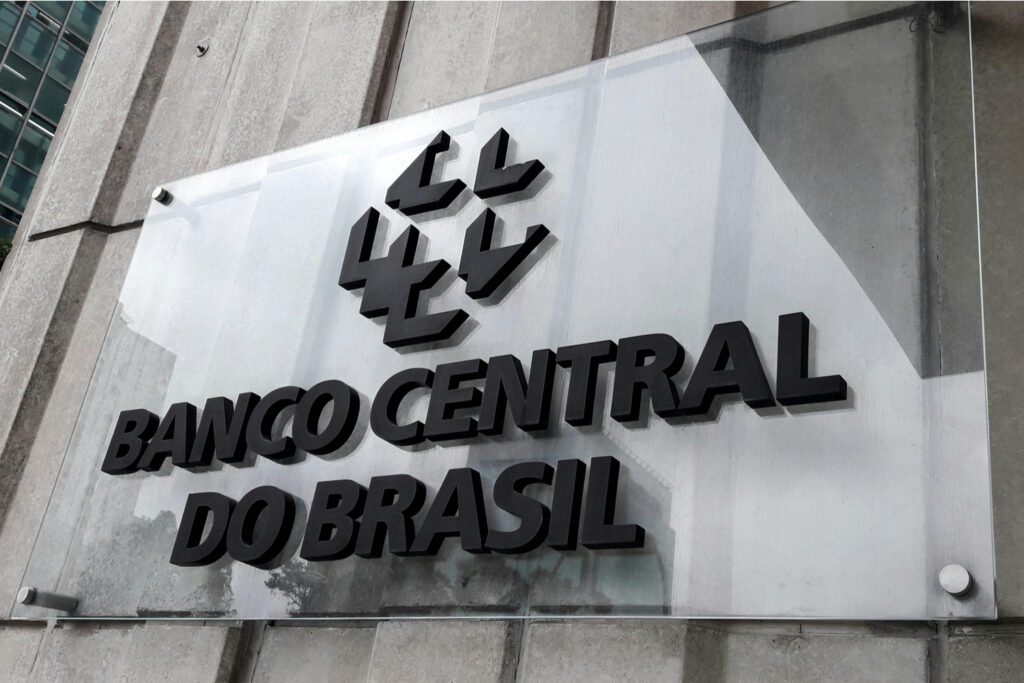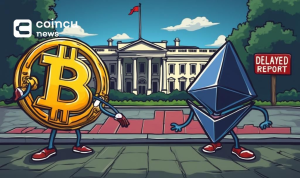Key Points:
- A developer finds control functions in Brazil’s CBDC source code, enabling central authority to freeze funds or adjust balances.
- Concerns arise over central authority’s power, while potential benefits include improved tax traceability and transparency.
- The Digital Real pilot project aims to address bank runs and foster innovation, requiring central bank approval for user participation.
A blockchain developer claims to have reverse-engineered the source code of Brazil’s pilot central bank digital currency (CBDC) and made a startling discovery.

The code contains functions that would allow a central authority to freeze funds or reduce balances within the digital currency system. While the developer acknowledges potential benefits, concerns are being raised about the extent of control that a central authority would possess over users’ financial transactions.
The source code for the Real Digital pilot project, initiated by Brazil‘s top bank, was posted on GitHub on July 6. The bank emphasized that the project is solely intended for a test environment and that the “presented architecture” could undergo additional changes.

Pedro Magalhães, a blockchain developer and the founder of tech consulting firm Iora Labs, claimed to have successfully “reverse-engineered” the open-source code of Banco Central do Brazil’s Digital Real. His analysis revealed functions within the code that enable the freezing and unfreezing of accounts, adjustment of balances, transfer of funds between addresses, and creation or burning of digital currency from specific addresses.
The publication of the Real Digital source code prompted a public audit, catching the attention of several developers who began analyzing the code. Through reverse engineering techniques, Magalhães discovered additional functions that allow authorized entities, such as the Central Bank, to make significant changes to the CBDC’s ledger data, directly impacting its users.
These functions include the ability to freeze and unfreeze specific accounts, increase or decrease financial balances of frozen accounts, move digital currency coins between chosen addresses, and create or burn coins at specific addresses. Magalhães’s findings have been corroborated by other developers who have examined the Real Digital source code.
When questioned about the discovered functions, the Central Bank acknowledged their existence and stated that similar functionalities are already present in current systems such as SPB and Pix, subject to legal and regulatory governance.

While concerns have been raised within the cryptocurrency community regarding CBDCs potentially infringing on financial freedom and privacy, Magalhães offered a different perspective. He highlighted the traceability of taxes as a potential benefit, enabling the public to inspect the allocation of tax funds. Additionally, he mentioned the possibility of scrutinizing state purchases on-chain, leading to enhanced transparency in parliamentary amendments.
Fabio Araujo, an economist at the Central Bank of Brazil, expressed that the Digital Real has the potential to address bank runs and create a safer and more reliable environment for entrepreneurial innovation.
The Digital Real pilot project is reportedly operating on Hyperledger Besu, a privately operated Ethereum Virtual Machine (EVM)-compatible blockchain. As it is not permissionless like the Bitcoin or Ethereum mainnets, users would require the central bank’s approval to become a node, as highlighted by Magalhães.
The unveiling of these control functions in the CBDC source code has ignited discussions about the balance between control and transparency in central bank digital currencies, raising questions about the implications for financial autonomy and privacy within the digital realm.
DISCLAIMER: The information on this website is provided as general market commentary and does not constitute investment advice. We encourage you to do your own research before investing.























